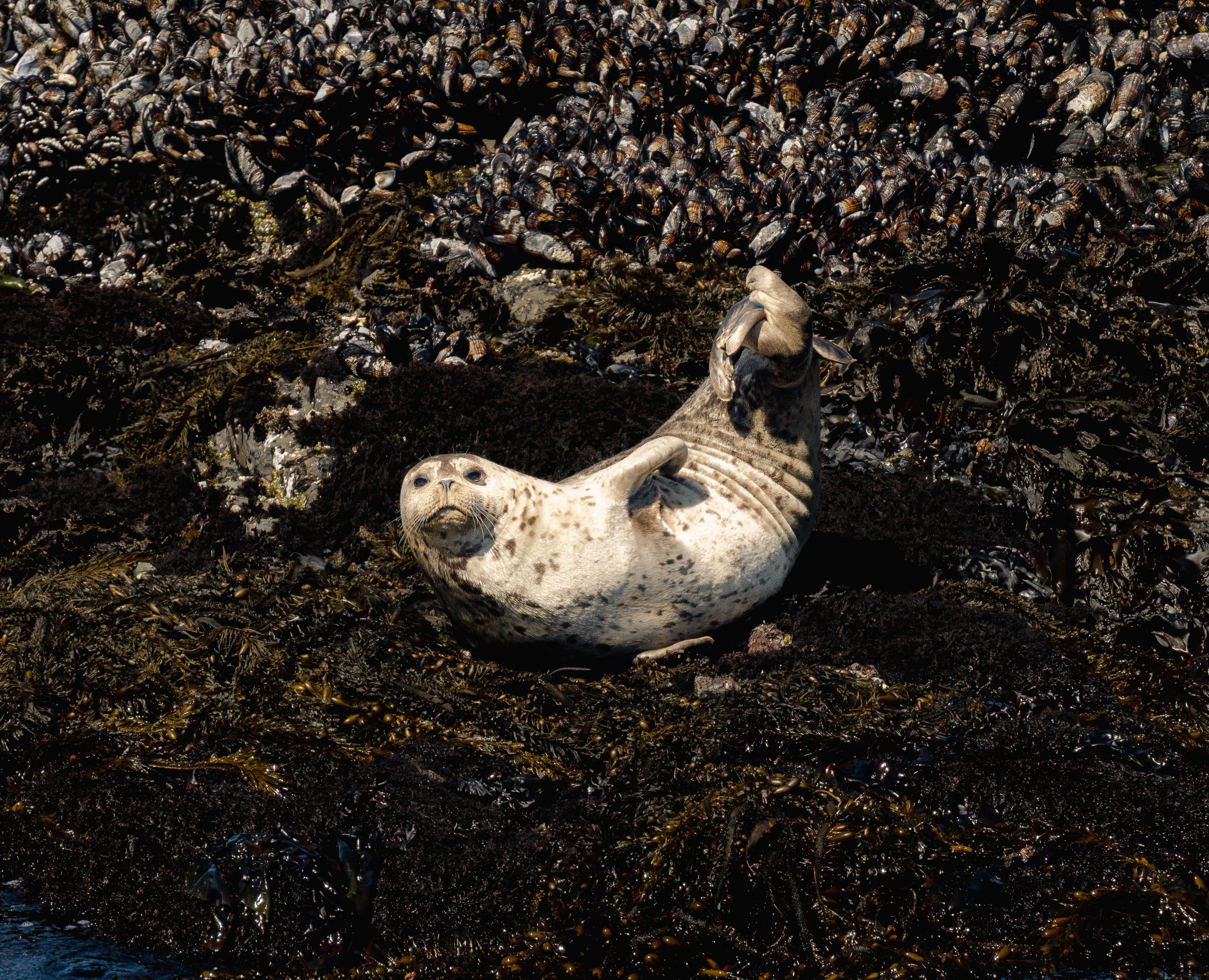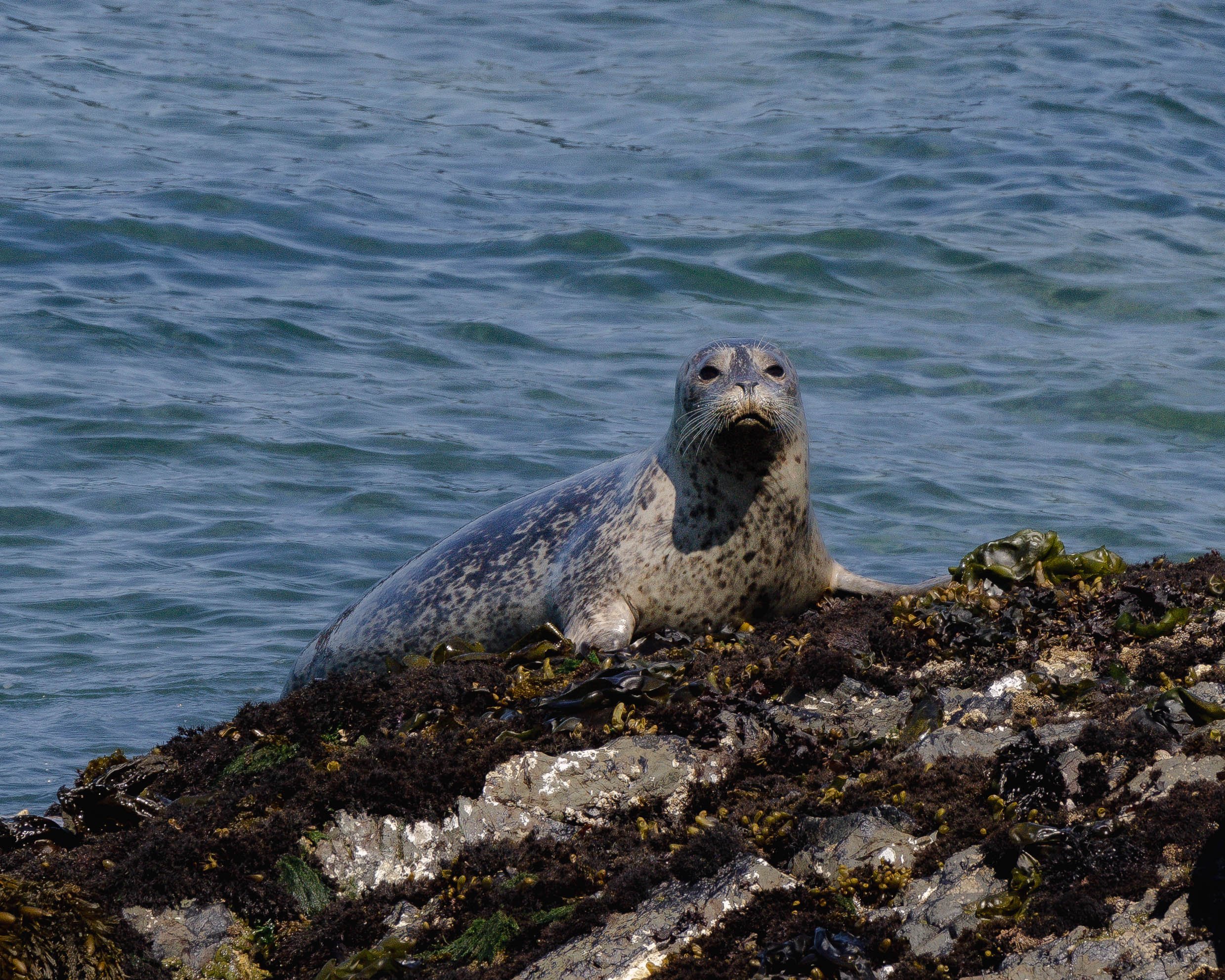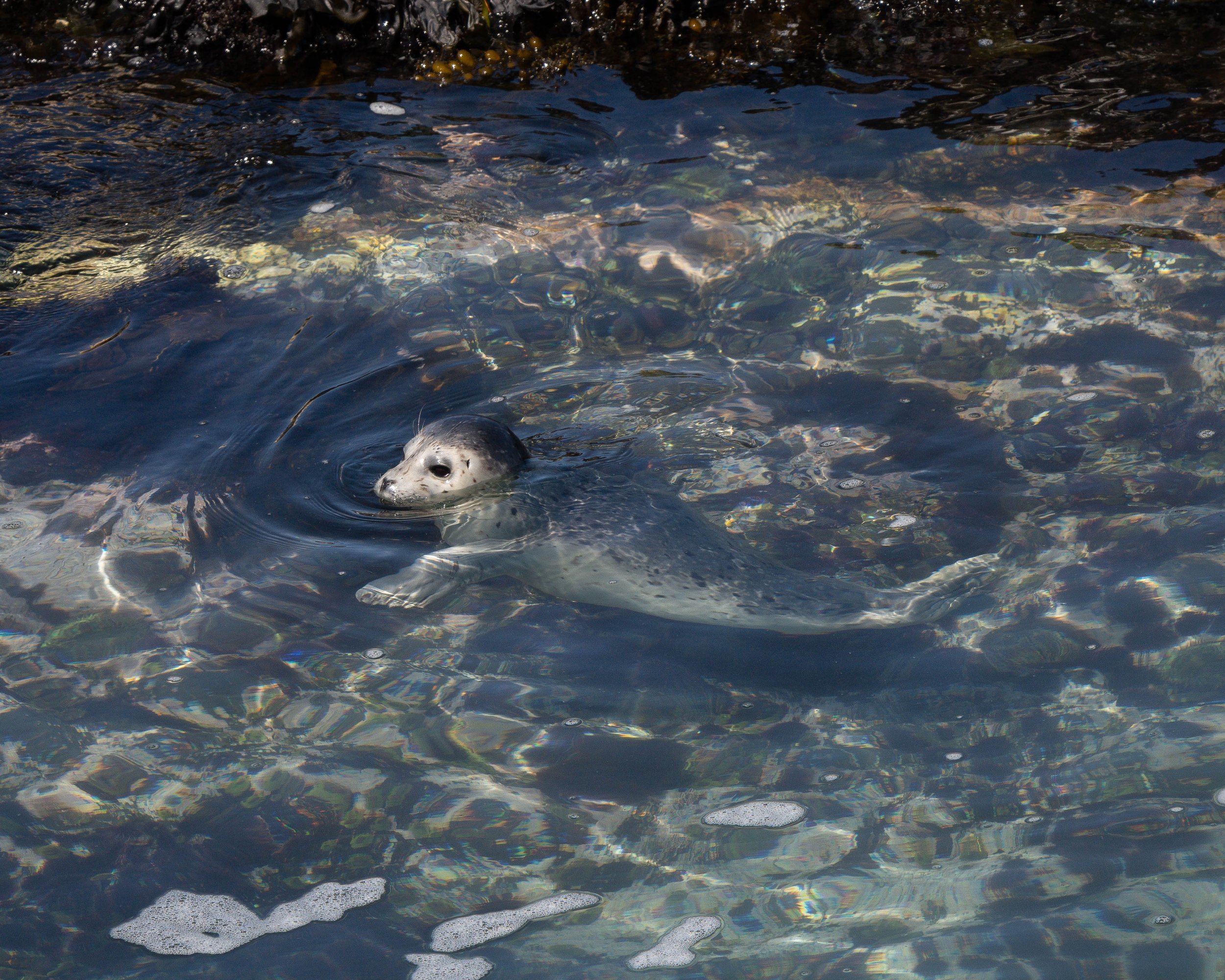Pacific Harbor Seals on the Mendocino Coast.
“The greatest threat to our planet is the belief that someone else will save it.”
-Robert Swan




When I decided to pursue wildlife photography, I knew that I wanted to do it with intention.
I know that humans are destroying wildlife and their habitats every day, I know that I care about it, and I know that I want to do what I can to stop it. So, I want to pursue wildlife photography with a purpose to raise awareness for conservation. But, how do I do that? What is my purpose with wildlife photography? I am not 100% sure, yet. We learn more when we discover more. Exploration is education. And our natural desire for adventure leads to a better world through education and learning. Wildlife is a beautiful part of our planet, and this is my way to share how we can better care for and co-exist with these beautiful animals.
Speaking of beautiful animals, pacific harbor seals are a sight to see - beautiful in their own way. According to nps.gov, they can weigh up to 300 pounds, can be 5-6 ft in length, and live an average of around 40 years even in the wild. Harbor seal pups can swim right after birth and adult harbor seals can be underwater for even up to 30 minutes. They also eat up to 15 pounds of food per day, and their diet includes fish, crustaceans, and other underwater creatures like octopus.
The NOAA Fishery shares some common threats to these harbor seals and how we can continue to care for these beautiful harbor seals. These threats include entanglement in fishing gear, illegal harassment like feeding or disturbing their habitat, habitat degradation through shoreline developments, and unnatural chemicals in the water from industrial developments.
From the NOAA Fishery website:
“Contaminants enter ocean waters from many sources, including oil and gas development, wastewater discharges, agricultural and urban runoff, and other industrial processes. Once in the environment, these substances move up the food chain and accumulate in top predators such as harbor seals. These chemicals do not degrade. Harbor seals accumulate contaminants, which threaten their immune and reproductive systems, in their blubber, blood, and organs (for example, liver or brain). These chemicals can be passed on to their pups during pregnancy and in milk.”
One thing that is important to know about harbor seals is that it is often normal to see a harbor seal pup alone. The mothers will leave their pups for a bit to feed, then return. While the mothers are feeding, humans will sometimes approach the pup and try to care for it because they believe it to be abandoned even though this is not the case. The presence and residual smell of humans can then scare the mother into abandoning her pup. If you see a harbor seal pup alone, don’t approach it. Observe it and call the local wildlife venter if you believe it to be abandoned. (noyocenter.org)
Pacific harbor seals are fun to observe as it feels like they pretty much own the Mendocino Coast. I hope that these photos have inspired thoughts and conversations as to how we can better care for harbor seals and co-exist with them on our planet.
Photos captured on a SONY A7RIV and edited in Lightroom.
Follow Laura on Instagram!
@laura.czaplicki